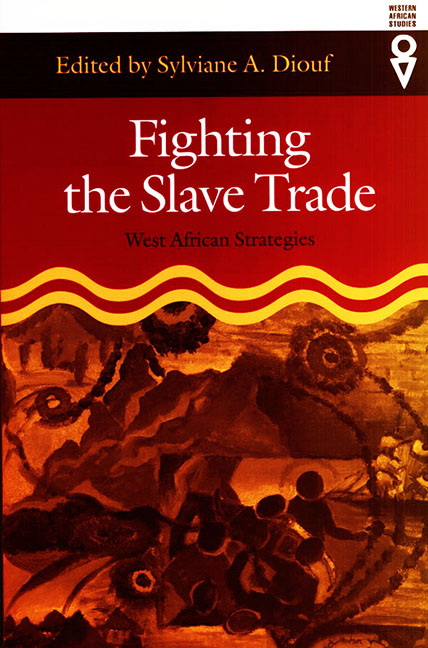Book contents
- Frontmatter
- Contents
- Preface
- Introduction
- PART 1 DEFENSIVE STRATEGIES
- 1 Lacustrine Villages in South Benin as Refuges from the Slave Trade
- 2 Slave-Raiding and Defensive Systems South of Lake Chad from the Sixteenth to the Nineteenth Century
- 3 The Myth of Inevitability and Invincibility: Resistance to Slavers and the Slave Trade in Central Africa, 1850–1910
- 4 The Impact of the Slave Trade on Cayor and Baol: Mutations in Habitat and Land Occupancy
- 5 Defensive Strategies: Wasulu, Masina, and the Slave Trade
- PART 2 PROTECTIVE STRATEGIES
- PART 3 OFFENSIVE STRATEGIES
- Epilogue: Memory as Resistance: Identity and the Contested History of Slavery in Southeastern Nigeria, an Oral History Project
- Contributors
- Index
5 - Defensive Strategies: Wasulu, Masina, and the Slave Trade
from PART 1 - DEFENSIVE STRATEGIES
Published online by Cambridge University Press: 30 August 2017
- Frontmatter
- Contents
- Preface
- Introduction
- PART 1 DEFENSIVE STRATEGIES
- 1 Lacustrine Villages in South Benin as Refuges from the Slave Trade
- 2 Slave-Raiding and Defensive Systems South of Lake Chad from the Sixteenth to the Nineteenth Century
- 3 The Myth of Inevitability and Invincibility: Resistance to Slavers and the Slave Trade in Central Africa, 1850–1910
- 4 The Impact of the Slave Trade on Cayor and Baol: Mutations in Habitat and Land Occupancy
- 5 Defensive Strategies: Wasulu, Masina, and the Slave Trade
- PART 2 PROTECTIVE STRATEGIES
- PART 3 OFFENSIVE STRATEGIES
- Epilogue: Memory as Resistance: Identity and the Contested History of Slavery in Southeastern Nigeria, an Oral History Project
- Contributors
- Index
Summary
HISTORIANS LOOKING AT AFRICA during the period of the Atlantic slave trade have generally focused on the growth of slave-trading states and the extension of slave trade routes into the far interior. Writers like Patrick Manning (1990) have divided African populations into the raiders and the raided. While raiders often became raiders in order to acquire weapons, almost all raided societies learned how to defend themselves. The effectiveness of their defenses forced slavers to reach deeper and deeper into the interior (e.g., Miller 1988, pt. 1). It also forced them to develop new strategies. My thinking on this question has been focused recently by the work of two young historians trained at Stanford, Andrew Hubbell (1997; 2001) and Walter Hawthorne (1998; 1999; 2001; this volume). Both Hubbell and Hawthorne argue that the societies they studied learned to defend themselves quite effectively, forcing slavers to develop increasingly complex strategies. I explore two other cases, Wasulu and Masina. One fits the Hubbell-Hawthorne model and the other is different.
The most important defense against slavers was the construction of walled and fortified villages. Here the work of Hubbell and Hawthorne merges with a masterful thesis about military architecture written by Guinean historian Thierno Mouctar Bah (1985; see also this volume). Its central argument is that in the absence of cannons, African armies could not breech the walls of a fortified town or village. Even Samori, West Africa's most powerful military leader, could not break the siege of the fortress of Sikasso. Since reading Bah's book, I have analyzed the siege of a market town in Wasulu in southern Mali, Ntentu, which did eventually fall, probably because it was betrayed. But its siege took months and involved resources that few slavers had. Village walls were not monumental but were high enough to put off slavers, who usually lacked the resources to undertake sieges. In West Africa, while massive military campaigns took place, much of the slaving was done by small bands of raiders. Slaving, I may add, was not a highly remunerative business.
Before I discuss the defensive mechanisms, let me describe these two societies. Wasulu is a decentralized society in southern Mali. By the eighteenth century, it faced some very predatory neighbors, of whom the most powerful were Segu to the north and Futa Jallon to the west.
- Type
- Chapter
- Information
- Fighting the Slave TradeWest African Strategies, pp. 62 - 78Publisher: Boydell & BrewerPrint publication year: 2004



